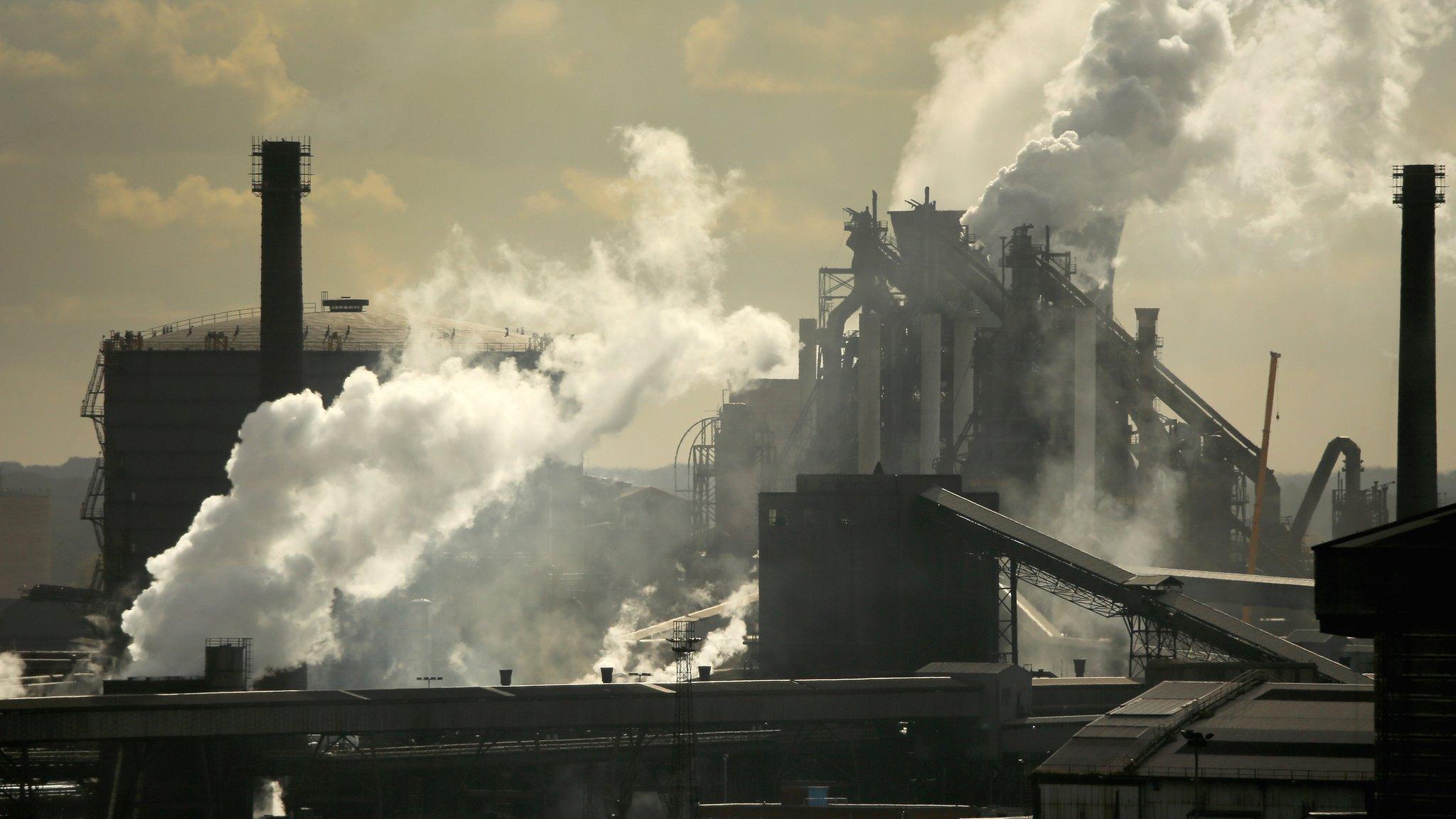The rise and fall of Britain's steel industry
- Published
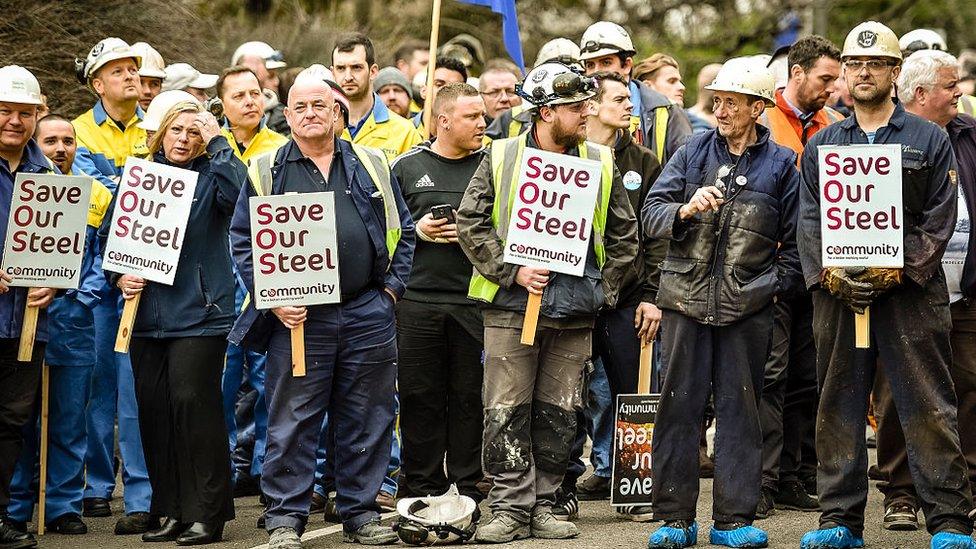
The steel industry employs about 30,000 people today; 40 years ago the figure was 10 times that
For those of us who live partly in the past, the idea that the British steel industry should be under threat is both familiar and unimaginable.
But now Tata Steel is negotiating to sell its huge works in Port Talbot and other UK interests and the spotlight is on the apparent long decline of the British steel industry, and how it happened.
For steel was once one of the pillars of British industry, one of the "commanding heights of the economy" twice taken into state ownership (at least in part) by Labour governments after World War Two, twice privatised by the Conservatives.
Some 350,000 people were employed in the steel sector when it was nationalised by Prime Minister Harold Wilson in 1967, compared with about 30,000 now.
Listen to Peter Day's programme: Steel in the UK
More to download from Peter's World of Business
Steel was at the heart of the new Europe in the post-war recovery: the EU started life as the European Coal and Steel Community. Steel was vital to build battleships and munitions, so it was a strategic industry. Steel was how a country defined itself.
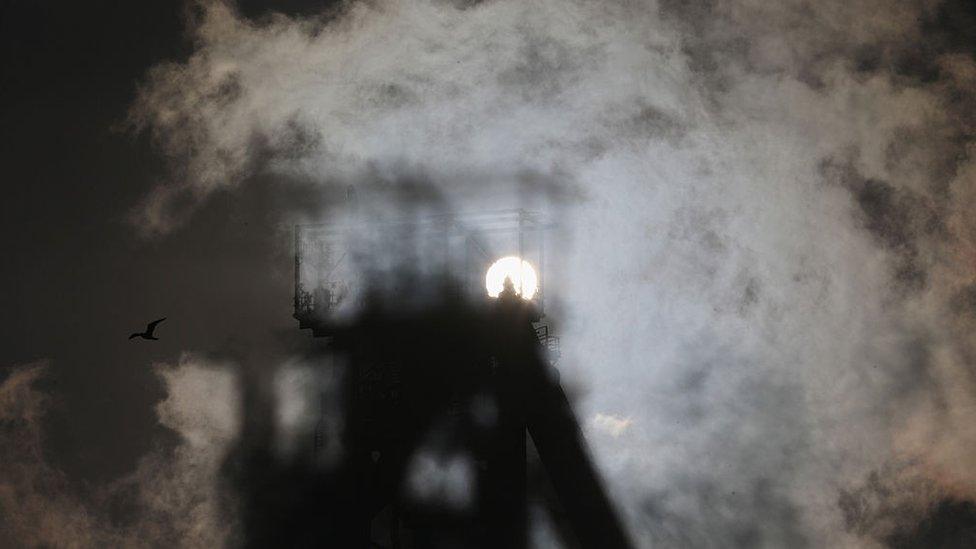
Steel was at the heart of Europe's post-war recovery: the EU started life as the European Coal and Steel Community
And that seems to explain the ferocious booms and busts to which the industry has been prone for so long.
UK willing to take 25% stake in steel rescue deal
China 'commits' to cut steel production
Huge investments
It is natural for a country when it is developing to invest in new steelworks as it tries to create its own industrial revolution (think Japan, South Korea then China).
Railways, bridges and buildings all need steel, and lots of it.
But steel needs huge investments in blast furnaces and rolling mills to create an industry, and once erected they churn out more mass-produced steel than a developing country can cope with.
This tends to push down prices and impels new producers to find new markets abroad for their steel. It's a global world.
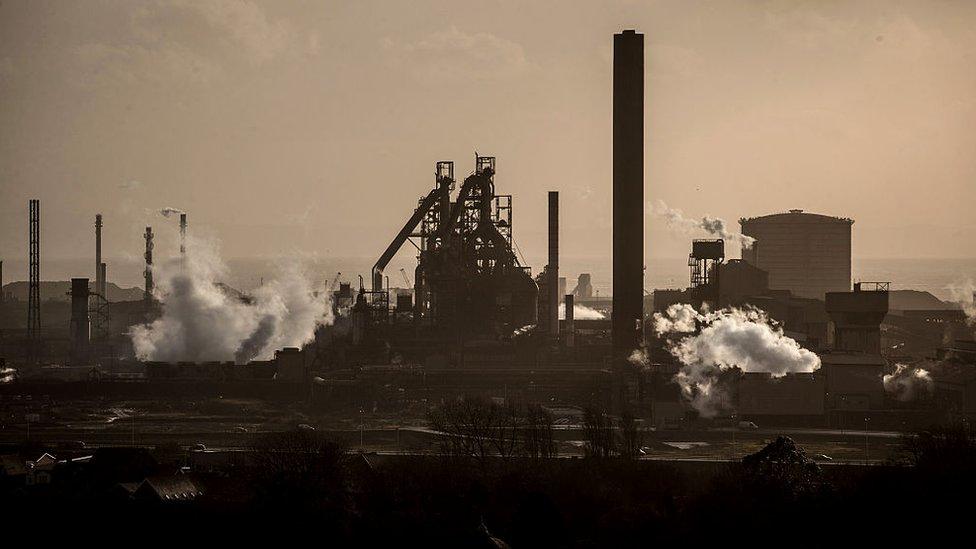
Tata's proposed sale has created huge uncertainty for the people of Port Talbot, many of whom rely on the steelworks for their living
A glut develops, prices plunge, giant steelworks rack up losses or at best break even. A bust is born. It has happened regularly since 1945.
But the world has never seen anything like the Chinese industrial revolution of the past 30 years, and one of the things that China invested in on its green-field sites on the edge of cities was steel.
When China's economic development slows down as it has done in the past five years, there's too much steel at home and producers cut prices to export the stuff. This time the steel glut is a huge one.
That's one of the main reasons why the Port Talbot plant is now up for sale. After Tata Steel bought it and three other former British Steel plants in 2007, some £300m was invested in new equipment in South Wales.
Tata from India wanted to keep up with its international rivals; its takeover of the Anglo-Dutch company, by then called Corus, was a £6.2bn bid to create the fifth largest steel company in the world.
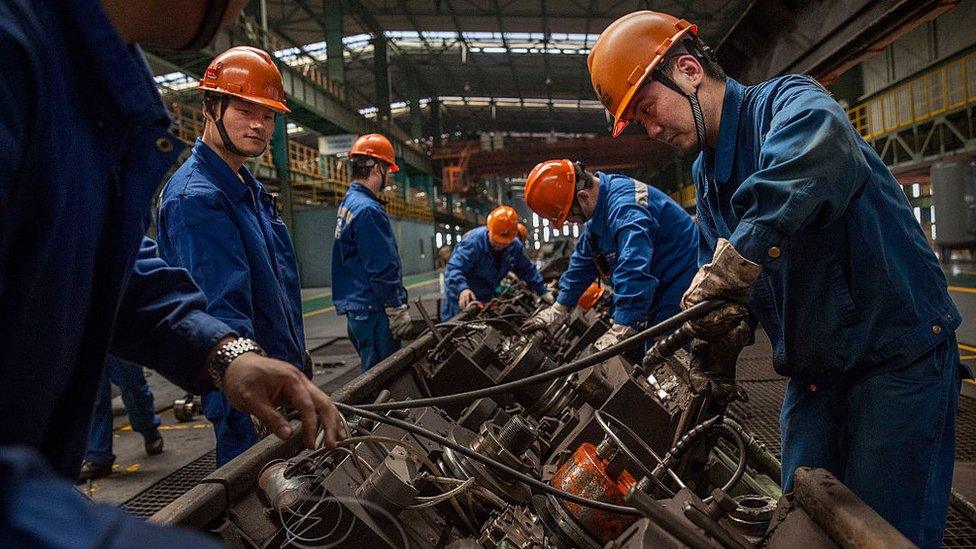
As China's economy has slowed, its steel producers have turned to overseas markets
It happened just before the financial crisis, just before the world economy slowed down even in the developing world.
Boom and bust
The Tata sale of Port Talbot - first headlined as a closure in March - has created huge uncertainty for the 37,000 people of the Welsh town absolutely founded on iron and steel, many of whom rely on the works for their living, directly or indirectly.
But steel has been here before. And the peaks and troughs of the production cycle are a significant part of the story of how British industry evolved - and perhaps the penalties you pay for being a pioneer.
Iron was at the heart of the industrial revolution, led by British expertise at Coalbrookdale in Shropshire at the very end of the 17th Century.
Despite the world's first iron bridge across the Severn at Ironbridge (of course), iron was mostly brittle and snapped under pressure.
Steel - strong and flexible - was made by small-scale workshop craftsmen until Henry Bessemer brought his new invention, the converter, up from London to Sheffield in the 1850s.
And Bessemer ushered in the mass production revolution which started the boom and bust mentality of steel which persists to this day. Blast furnaces such as Bessemer's created the city of Sheffield.
Science park
The other day I was in the Don Valley that runs between Rotherham and Sheffield just a few miles away. I was there to see the Magna Science Adventure Centre, a heritage place created out of one of the old works at Templeborough, run in its prime by the firm of Steel, Peech and Tozer and known locally as Steelos.
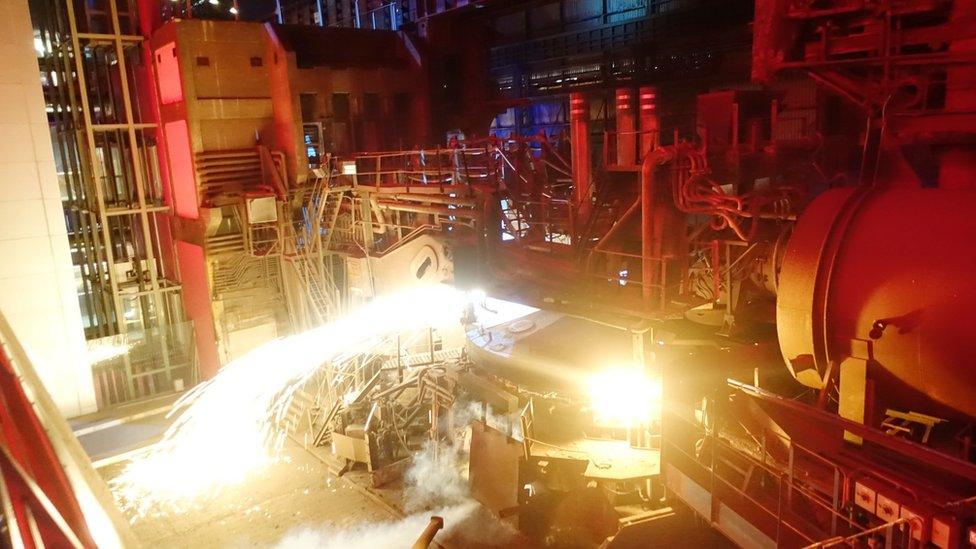
Templeborough's old steelworks now houses a heritage centre - including this recreation of steel production
It's far larger than a cathedral or an airship hangar, and once housed six monstrous electric arc furnaces making steel from scrap. It was the biggest concentration of them in the world.
The centrepiece of the vast space is a recreation of the steel production process called the Big Melt. Every hour in front of parties of enthralled schoolchildren, there's a show of simulated sound and gushes of fire from the extraordinary electric arc process that turns scrap metal back into steel.
The show is awe-inspiring and so is the process.
Living history
And so is the long tradition it commemorates: the 150,000 people who once worked in this valley in a succession of huge famous name steelworks.
John Heaps showed me round; he worked for more than 40 years in several of the works in and around Sheffield, and he has also studied the story of the industry he was part of.
It's not just history when you listen to John Heaps; the vast enterprises come alive.

Former steel worker John Heaps says he was once engulfed in flames from a furnace
Above all, he talks about the camaraderie of the jobs in the works, and the pride that people took in using their eyes and huge experience to make things for the whole world out of molten steel. Computers do the measuring now.
A well-paid (he says) but dangerous trade: on one occasion John Heaps was engulfed in flames shooting out of the furnace and feared that he would not survive. He did - shielded to a certain extent by the safety clothing everyone wore.
From unthinkable to thinkable
But making steel was never a predictable business.
The days he remembers are when the housewives of Templeborough checked the wind direction before they put their washing on the line - because wind blowing from the works would cover the washing in smuts in minutes.
And when the works all closed for two weeks in the summer for maintenance work, and everybody went off on holiday at the same time to the east coast seaside resorts, where (of course) they encountered their neighbours.
We still need steel, of course, but far fewer people are required to make it.
In Port Talbot they are still pinning their hopes on a rescue of the works by new investors ready to ride on hoped-for recovering world demand. But in many places in Britain a way of life has disappeared.
When I was growing up, this was unthinkable. Now it has happened.

Listen to Peter Day's In Business: Steel in the UK, on Radio 4 at 21:30 BST, Sunday 22 May
- Published21 April 2016
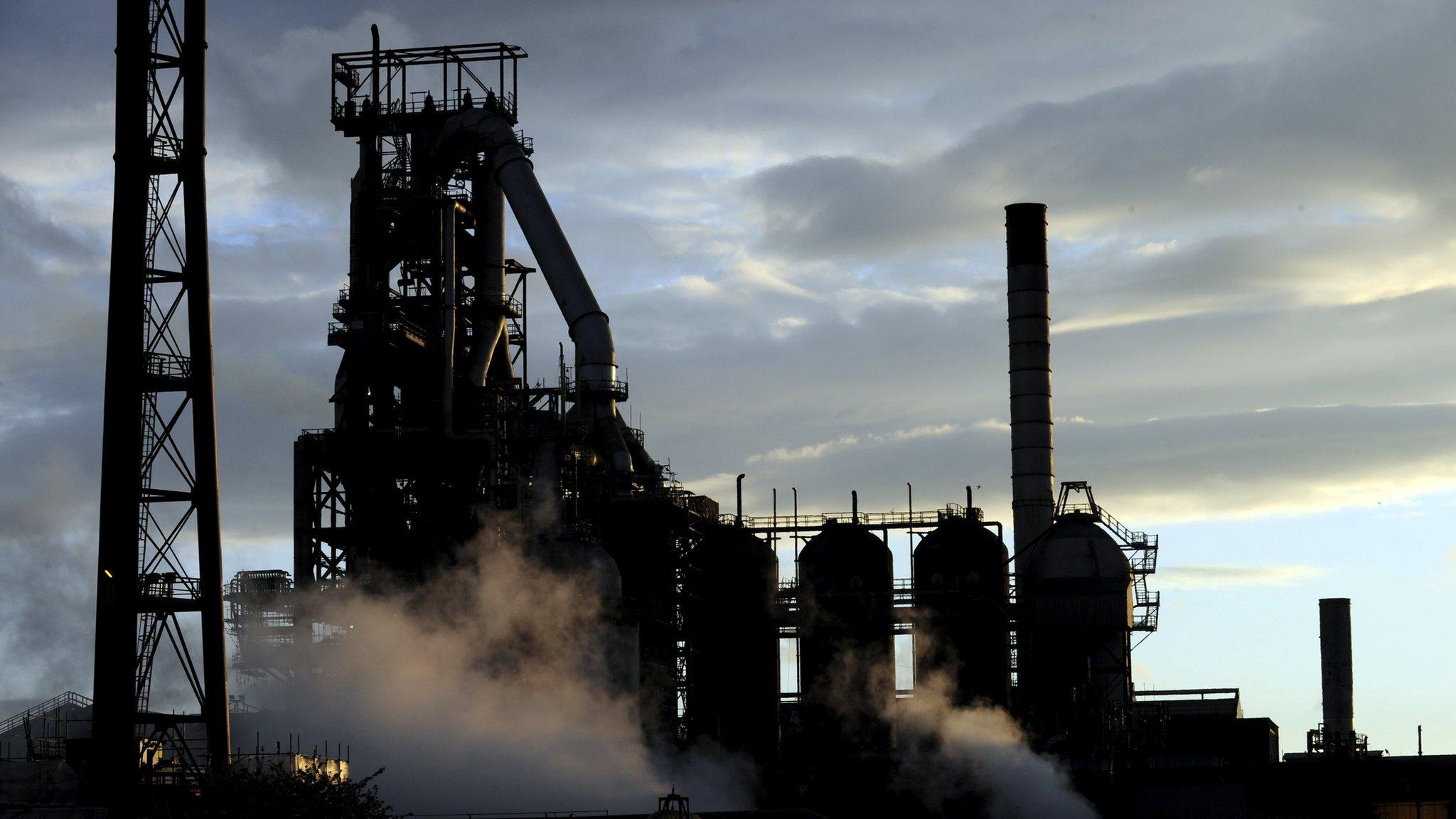
- Published18 April 2016
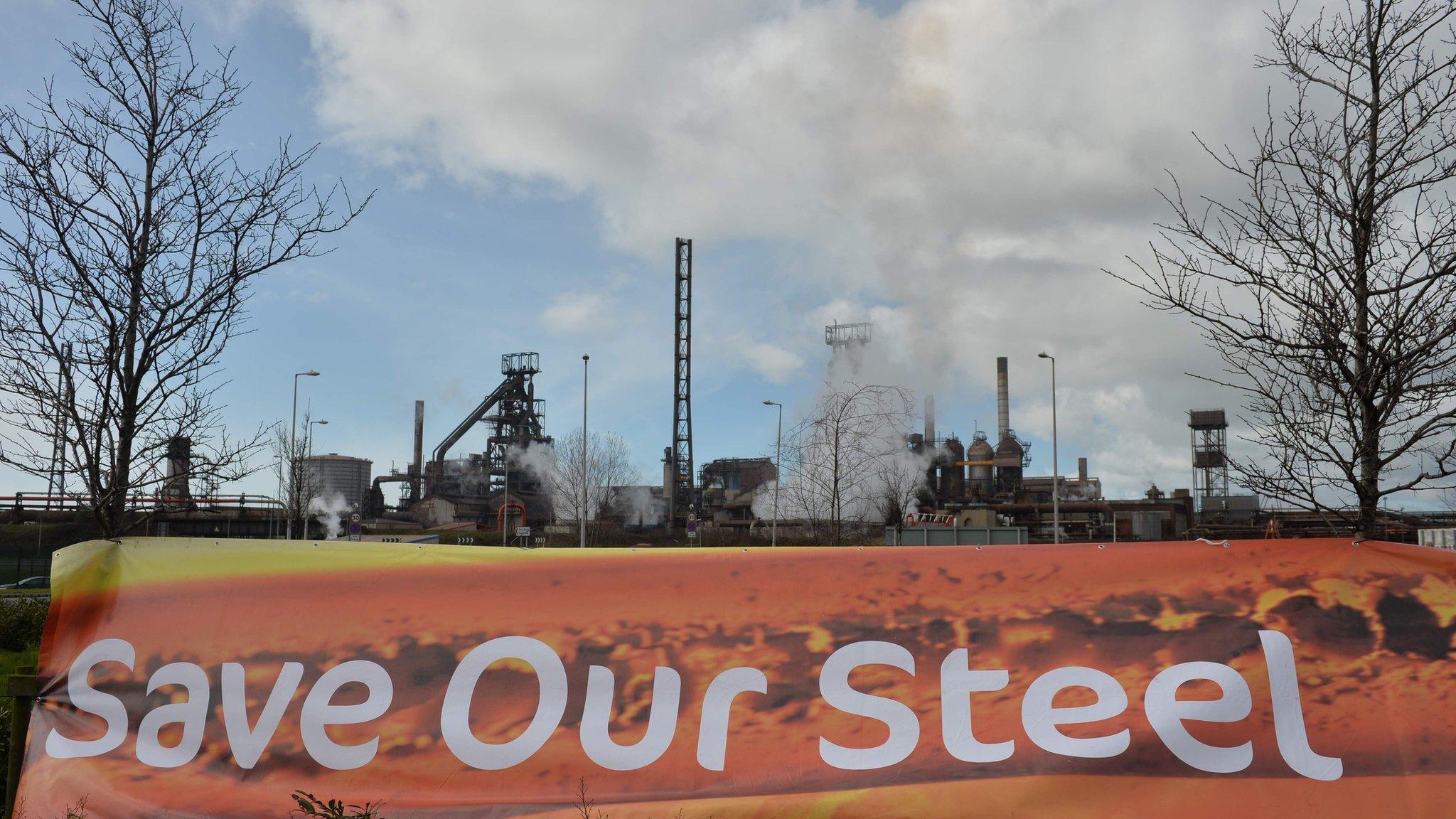
- Published31 March 2016

- Published30 March 2016
